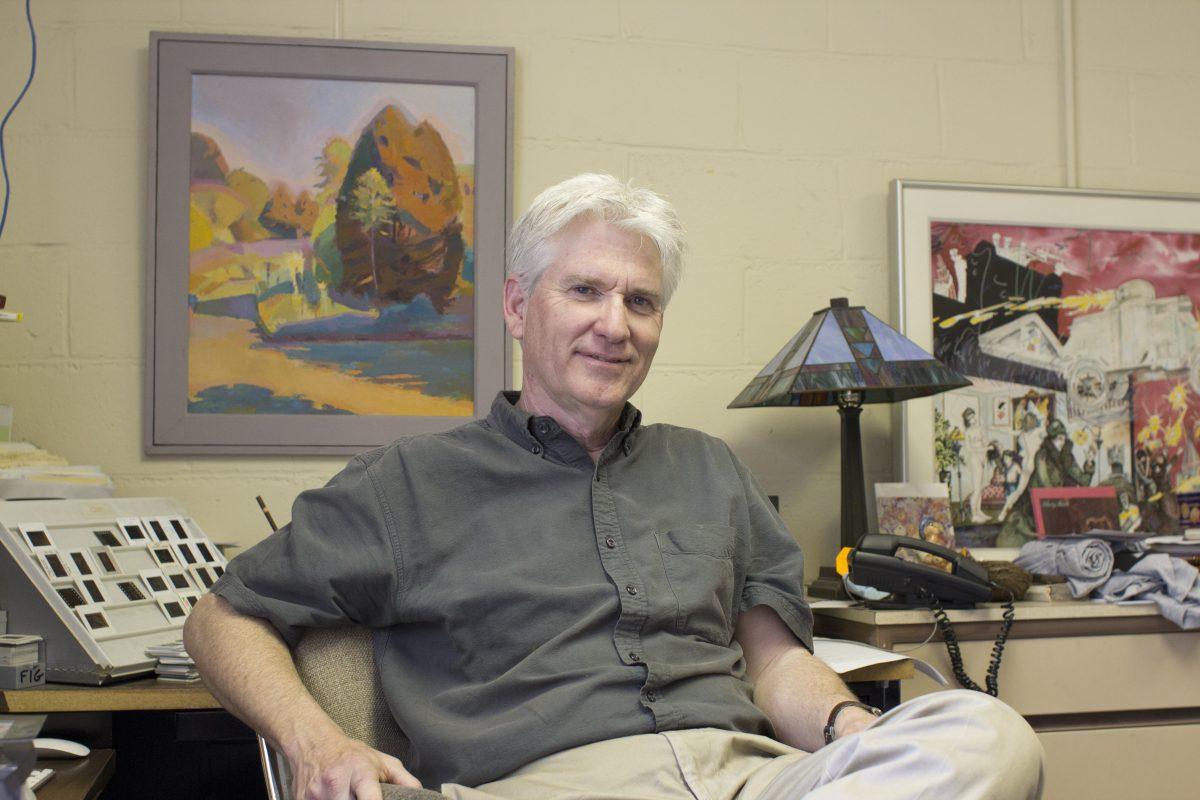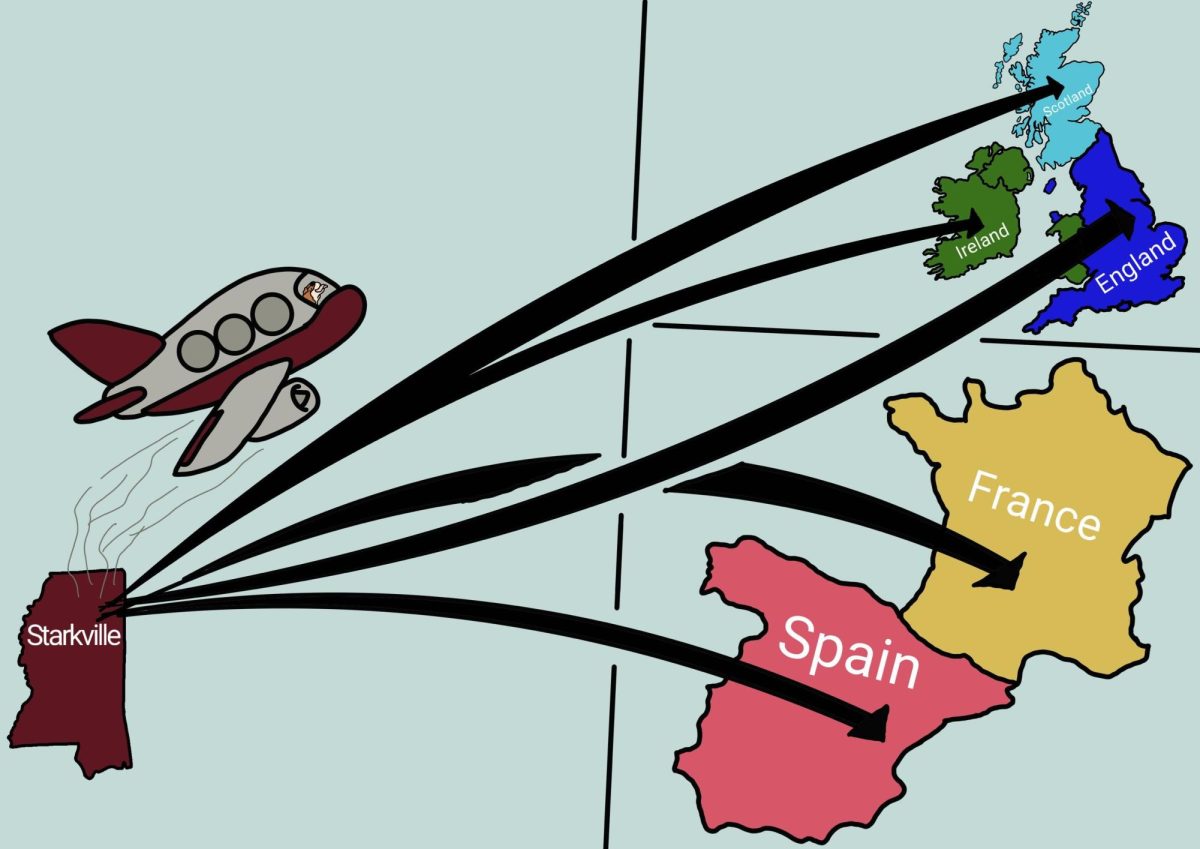Many people say they “live and breathe” what they do. Not many people say they “live, breathe and see” what they do. Brent Funderburk, watercolor specialist professor at Mississippi State University, has a special condition that causes him to associate colors with words, objects and seasons.
In the past year, Funderburk has come to realize he has a very special form of brain phenomenon called synesthesia. In common forms, people with synesthesia are able to see letters as colors.
Not only is Funderburk synesthetic, but he is also a synesthetic twin. His brother, Mike, is an architect.
Funderburk said the condition explains a lot about the way in which the brothers communicated growing up.
“We were sitting on grandmother’s porch. Mike says to me, ‘Let’s play cards. I’ll take Fords and Chevrolets, you will take red and green cards.’ He knew that I saw the cards as red and green, and I knew that he saw the cards as Fords and Chevrolets,” he said.
The discovery of this new condition has led to many realizations and opportunities for Funderburk. In October, he will speak in Santa Fe at an American Institute of Architects’ conference about art and architecture, using him and his brother as examples.
“I would like to talk about art and architecture. I will begin with an autobiography of sorts based on my brother and I, who will be named Arty and Archie,” Funderburk said. “We are always confronted with the issue of what is the difference between an artist and an architect. We have an analogous polarity. That is how we work.”
Funderburk believes children have freedom and are able to do what they truly desire.
“In the autonomy that is childhood, we can often be who we are. I am gradually becoming who I have always been,” he said.
He said he takes full advantage of every single day.
“Every day, since my childhood, I wake up and say, ‘Who am I?’” Funderburk said.
When asked about his artistic process, Funderburk gave an admirably empty response.
“I can talk about my work, but what really happens in the studio, I do not know. I do not want to know too much about it. I open myself up to new things,” he said.
For Funderburk, the studio is a connection to his childhood and the freedom to be who he is.
“(The studio) is the playroom I played in with my brother. The reason I make paintings is to keep that portal open to the time when I was a child when I knew exactly who I am. It’s like Robert Lewis Stevenson trying to get back to the Land of Nod,” he said.
Funderburk is renowned for his involvement with the work of Mississippi artist, Walter Anderson. Funderburk’s two favorite artists are Anderson and Charles Burchfield, but he said something pulls him toward Walter Anderson continually.
“Things kept pulling me to Mississippi. My teacher’s teacher’s teachers were also Walter Anderson’s. In 1982, when I first taught at Mississippi State University, I asked my class if anyone knew of Walter Anderson and if anyone was going down to the coast?” he said. “When I came back to class on Monday, on my desk was a Walter Anderson sketch book that a student had borrowed from Walter Anderson’s grandson, who he had met at a surfing contest that weekend.”
This sort of overlapping continued to occur throughout the years. Through his pursuit of the study of Anderson’s work, Funderburk has met the family of Walter Anderson and even done a show about Walter Anderson.
Funderburk has taught many classes that specifically focus on the work of Anderson and are influenced by his passion for the natural environment.
“I taught a class that combines natural science with sketch book journaling, as well as a class called ‘Encounters,’ which took people to wilderness environments and challenged them,” Funderburk said.
Now, Funderburk integrates the philosophies of Walter Anderson and the importance of nature into all of his classes.
“It’s about a perspective on nature. Nature is life, and it provides for creators. Nature is a celestial ladder. Walter Anderson believed that, so I try to bring the divinity of nature into the classroom,” Funderburk said.
Now through April 30, Funderburk has an exhibit of his work entitled “New Solar Myths,” which is on display at the Walter Anderson Museum in Ocean Springs, Miss. He will give a talk titled “Walter Anderson: A World Vision for Art, Nature and Man,” on April 10. Win Riley, who has done many films for PBS, will film the talk.





















































































